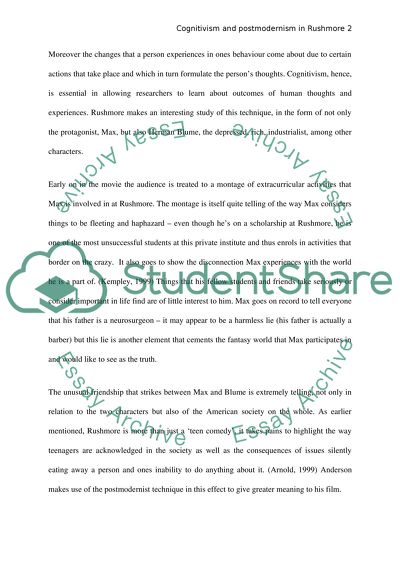Cite this document
(“Cognitivism and Postmodernism in Rushmore Essay”, n.d.)
Retrieved from https://studentshare.org/environmental-studies/1411087-cognitivism-and-postmodernism-in-rushmore
Retrieved from https://studentshare.org/environmental-studies/1411087-cognitivism-and-postmodernism-in-rushmore
(Cognitivism and Postmodernism in Rushmore Essay)
https://studentshare.org/environmental-studies/1411087-cognitivism-and-postmodernism-in-rushmore.
https://studentshare.org/environmental-studies/1411087-cognitivism-and-postmodernism-in-rushmore.
“Cognitivism and Postmodernism in Rushmore Essay”, n.d. https://studentshare.org/environmental-studies/1411087-cognitivism-and-postmodernism-in-rushmore.


